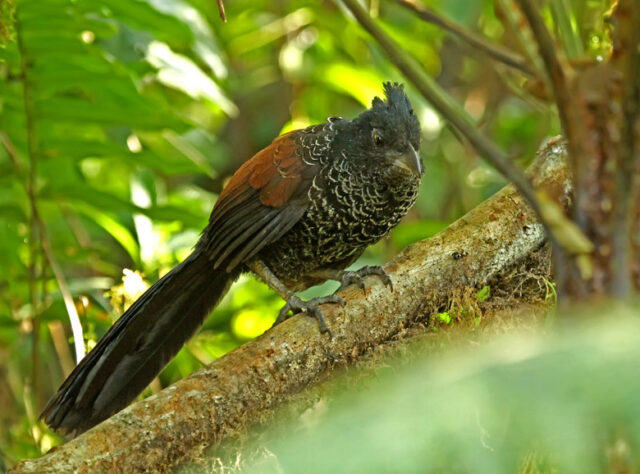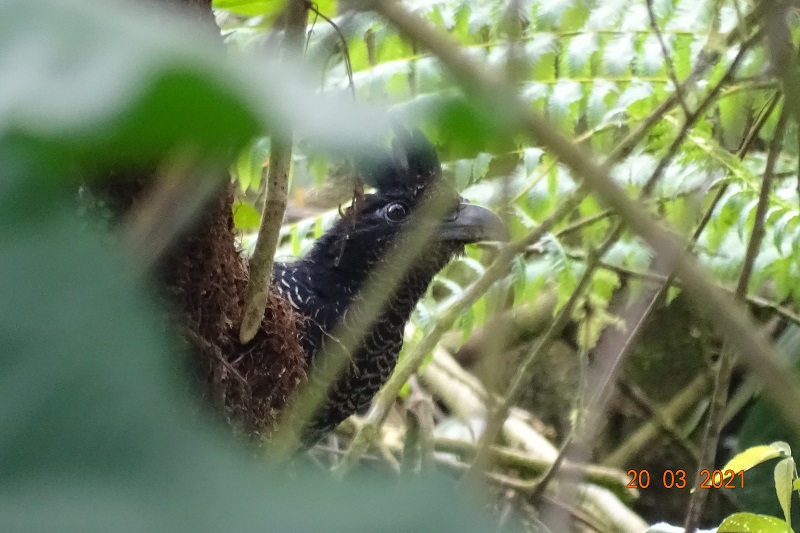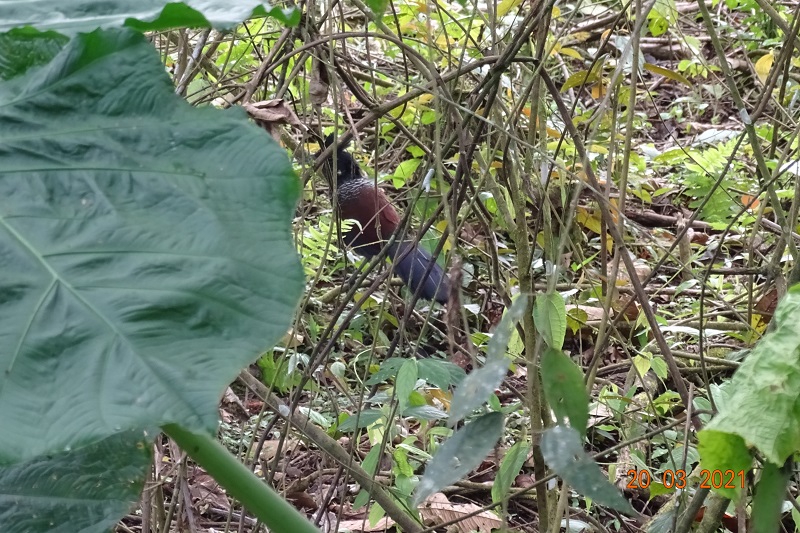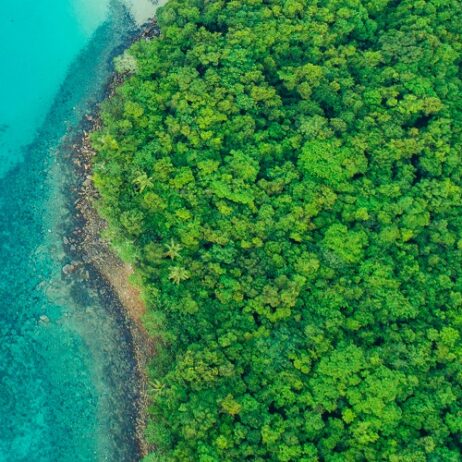
The Banded Ground-cuckoo’s reliance on big roaming spaces makes it vulnerable to habitat fragmentation. By saving land at Manduriacu, Buy an Acre supporters have created a chance to see this species thriving in the wild. Credit: Roger Ahlman
What would you do if you spotted one of the rarest birds of one of the world’s most biodiverse countries? Jimmy Álvarez from our partner Fundación EcoMinga recently photographed a Banded Ground-cuckoo in Ecuador as he patrolled a patch of rainforest saved by World Land Trust (WLT) supporters – visual proof of what connectivity can do for species that need large roaming grounds to thrive.
Elusive despite their size (46-50cm) and striking blue crest set against chestnut wings, Banded Ground-cuckoo are an extremely unusual sight even for those who protect Ecuador’s nature for a living. These roadrunner-like birds of northwestern Ecuador and western Colombia are classified as Endangered but very little else is known about them. “Almost no one has ever seen one,” says EcoMinga Director Lou Jost – making Jimmy’s recent encounter all the more remarkable!
As Lou stresses, the sighting at the Manduriacu Reserve – more specifically, at a section protected through donations to our Buy an Acre programme – demonstrates the value of building connectivity through land protection. “This is a bird that needs a huge area to forage and it will be one of the first to disappear if habitat fragmentation is allowed to take place. To maintain populations, we must continue preserving connectivity among forest patches across a large area,” he says.
We asked Jimmy – an 18-year-old ranger with EcoMinga and a keen bird watcher – to tell us about the rare encounter at Manduriacu:
“The weather was completely clear as I found the Banded Ground-cuckoo in a flat section of the forest, near a gully. When I discovered it, the bird was perching on a branch and following a trail of ants. I was wearing camouflage gear and was able, little by little, to get closer and take a few pictures. At that point the bird seemed to notice me and started heading away until I lost sight of it. To find myself in front of a Banded Ground-cuckoo was so moving. As a ranger, my hope and dream is that this species never disappears – that I’ll be able to find and photograph many others in Manduriacu.”
Press Ctrl as you click on each picture to see Jimmy’s photographs
in greater detail (all credits to Jimmy Álvarez)




